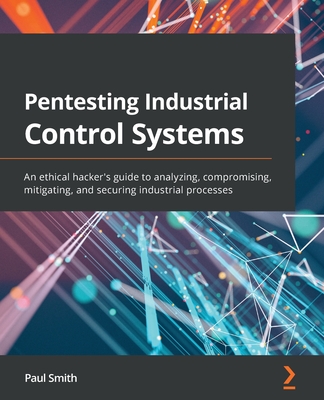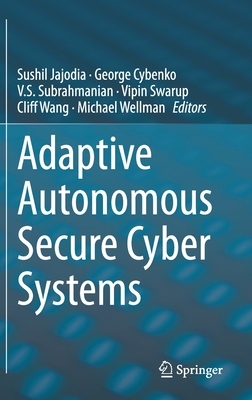-
出版商:
Independently Published
-
出版日期:
2019-07-26
-
售價:
$610
-
貴賓價:
9.5 折
$580
-
語言:
英文
-
頁數:
64
-
裝訂:
Quality Paper - also called trade paper
-
ISBN:
1082894915
-
ISBN-13:
9781082894916
-
相關分類:
區塊鏈 Blockchain
商品描述
The ability of the USAF to prevail in the highly contested environment of 2040 will be dictated by its ability to defend cyber-enabled systems, and the data within them, from compromise and manipulation. Yet contemporary cyber defense is faltering, and incremental improvements seem unlikely to overcome an exponentially growing cyber threat. Thus, an entirely new model for cyber defense strategy is needed. Blockchains are a new information technology that inverts the cyber security paradigm. First, blockchain networks are trustless; they assume compromise of the network by both insiders and outsiders. Second, blockchains are transparently secure; they do not rely on failure-prone secrets, but rather on a cryptographic data structure that makes tampering both exceptionally difficult and immediately obvious. Finally, blockchains networks are fault tolerant; they align the efforts of honest nodes to reject those that are dishonest. As a result, blockchain networks not only reduce the probability of compromise, but also impose significantly greater costs on an adversary to achieve it. The Air Force should research and develop blockchain technology and leverage it for national defense.This compilation includes a reproduction of the 2019 Worldwide Threat Assessment of the U.S. Intelligence Community.The concept of data-fighting is not new. In An Organic Design for Command and Control, Boyd describes conflict as a competition of OODA loops, with victory favoring the actor that can execute OODA cycles faster and with less internal friction than an adversary. While Boyd's model espouses the benefits of injecting friction into an adversary's decision process, it also promotes the benefit of making one's own process resilient to hostile action. The concept of data-fighting can also be related to the doctrine of counterair, which Air Force Doctrine Annex 3-01 defines as "the integration of offensive and defensive operations to attain and maintain a desired degree of control of the air and protection by neutralizing or destroying enemy aircraft and missiles." Similarly, data-fighting could be described as the integration of offensive and defensive operations to attain and maintain a desired degree of control of the ability to generate, store, disseminate, process, analyze, and exploit information and protection by neutralizing the enemy's interfering action. Counterair's concept of control, which "describes a level of influence in a] domain relative to that of an adversary," has important implications for data-fighting.4 Control exists on a spectrum ranging from parity in the center to superiority and supremacy by either belligerent at the extreme. Thus, in data-fighting, until an adversary achieves supremacy an actor retains some ability to data-fight.
商品描述(中文翻譯)
美國空軍在2040年高度競爭的環境中獲勝的能力將取決於其保護網路啟用系統及其內部數據不受妥協和操控的能力。然而,當前的網路防禦正在衰退,漸進式的改進似乎無法克服指數增長的網路威脅。因此,需要一種全新的網路防禦策略模型。區塊鏈是一種顛覆網路安全範式的新資訊技術。首先,區塊鏈網路是無信任的;它們假設網路會受到內部人員和外部人員的妥協。其次,區塊鏈是透明安全的;它們不依賴於易失敗的秘密,而是依賴於一種加密數據結構,使得篡改變得極其困難且立即顯而易見。最後,區塊鏈網路是容錯的;它們使誠實的節點的努力與不誠實的節點相抵制。因此,區塊鏈網路不僅降低了妥協的可能性,還對對手實現妥協施加了顯著更高的成本。空軍應該研究和開發區塊鏈技術,並將其用於國防。本彙編包括2019年美國情報社群全球威脅評估的重製。數據戰鬥的概念並不新鮮。在《指揮與控制的有機設計》中,博伊德將衝突描述為OODA循環的競爭,勝利偏向於能夠比對手更快且內部摩擦更少地執行OODA循環的行動者。雖然博伊德的模型提倡在對手的決策過程中注入摩擦的好處,但它也促進了使自己的過程對敵對行動具有韌性的好處。數據戰鬥的概念也可以與空軍教義附錄3-01中定義的反空中作戰的教義相關聯,該教義定義為「整合攻擊和防禦行動,以獲得和維持所需的空中控制程度,並通過中和或摧毀敵方飛機和導彈來保護」。類似地,數據戰鬥可以被描述為整合攻擊和防禦行動,以獲得和維持所需的控制能力,這種能力涉及生成、存儲、傳播、處理、分析和利用資訊,並通過中和敵方的干擾行動來保護。反空中作戰的控制概念,「描述了在某一領域相對於對手的影響程度」,對數據戰鬥具有重要的啟示。控制存在於一個光譜上,從中心的平衡到極端的優勢和至高無上的地位。因此,在數據戰鬥中,直到對手達到至高無上的地位,行動者仍然保留某種數據戰鬥的能力。












